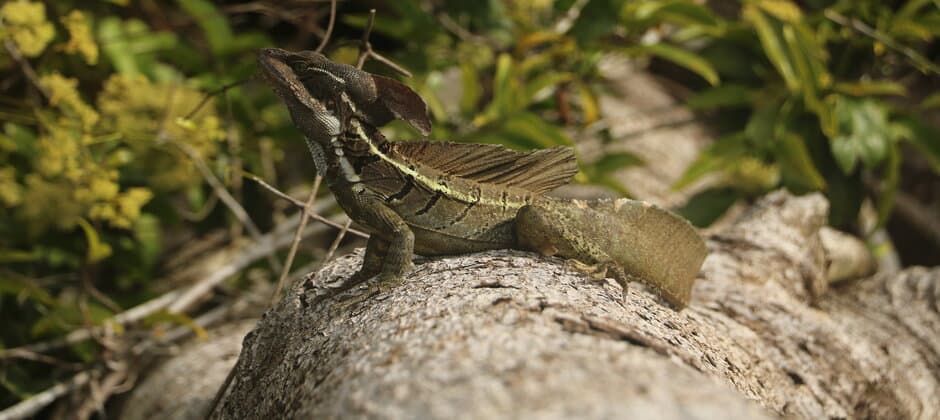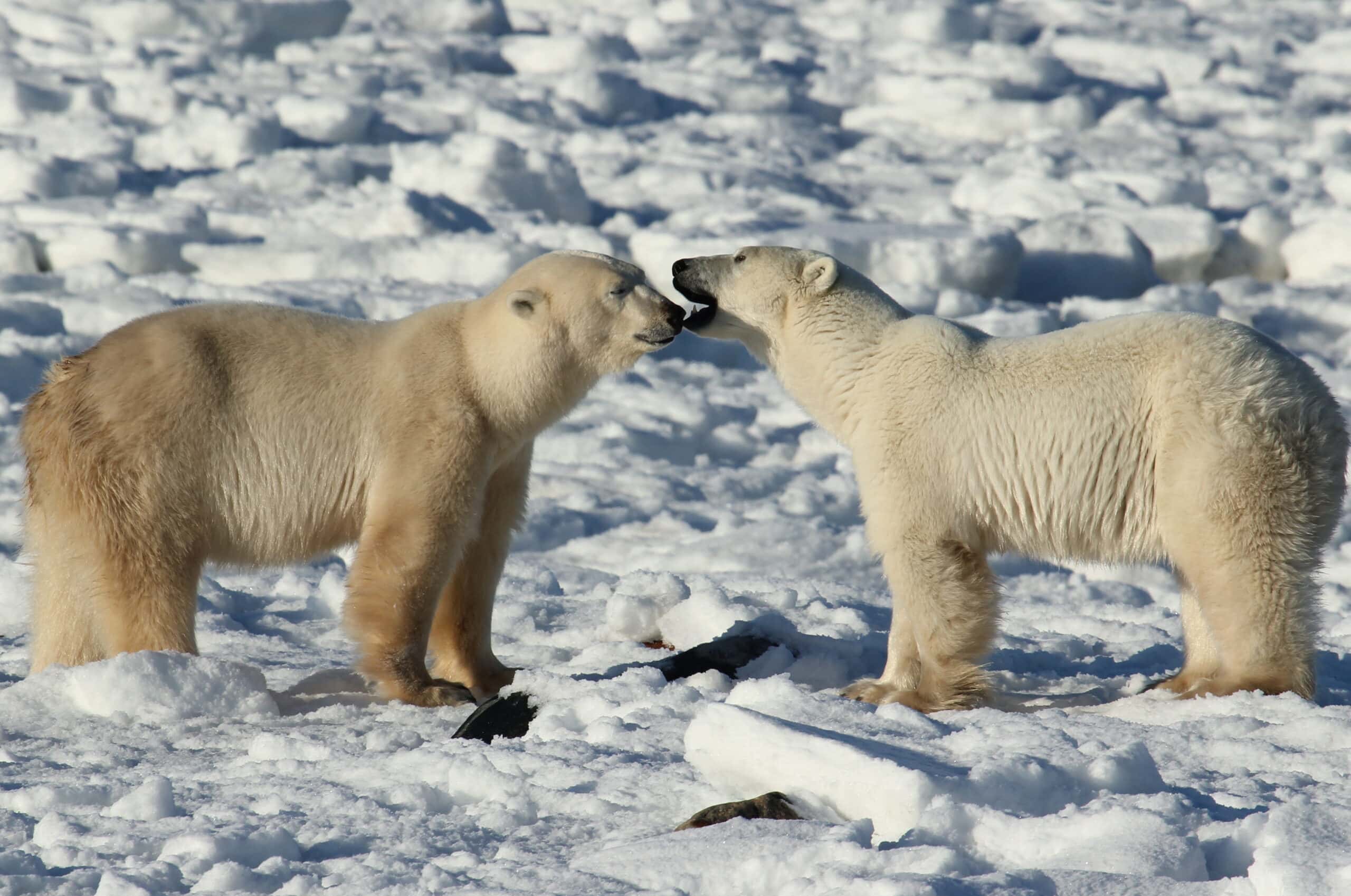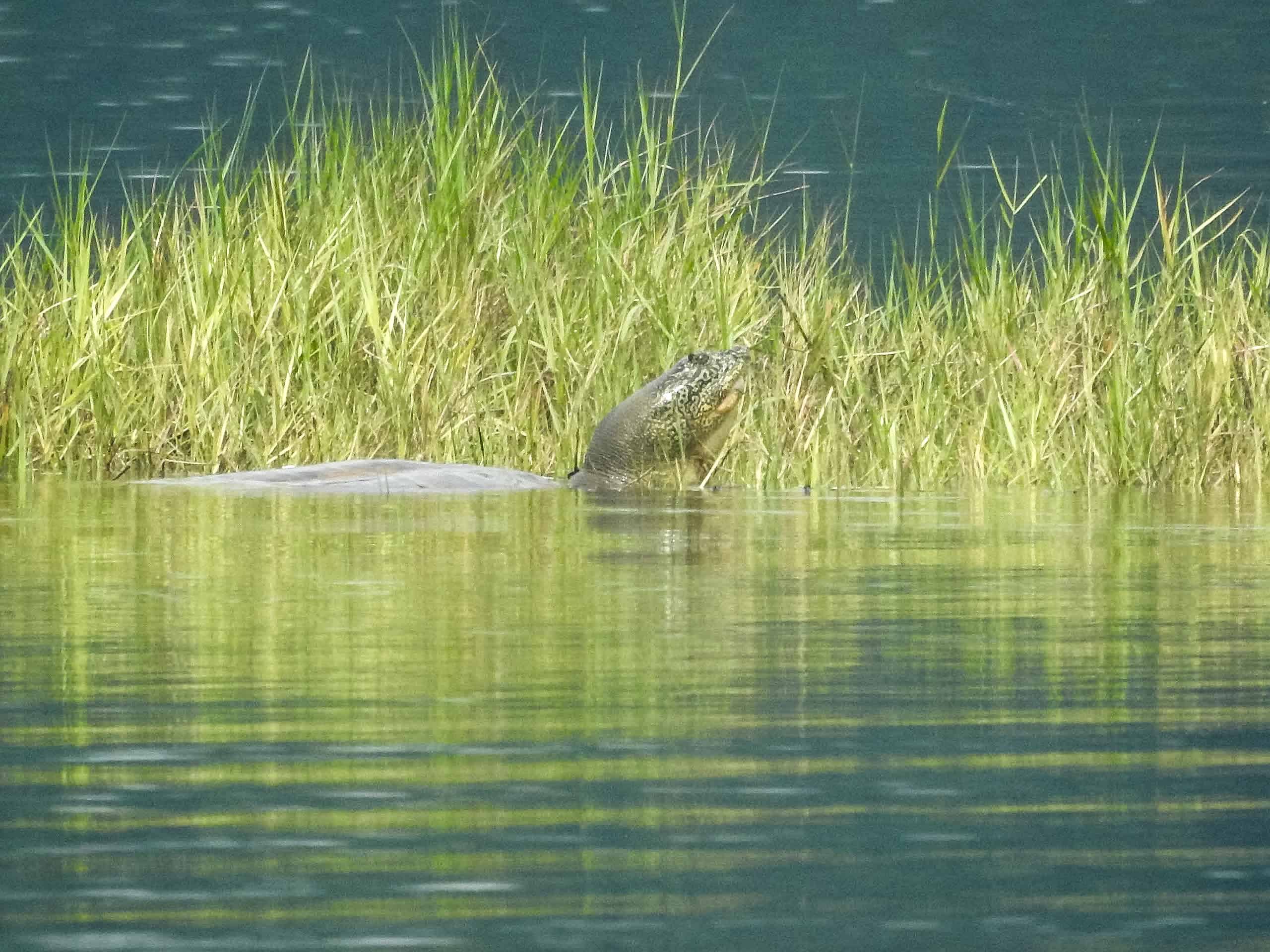Share this article
Invasive lizards in Florida adapt to colder temperatures
Invasive lizards are chilling in Florida — literally. The reptiles are adapting quickly to colder temperatures than they experience in their native tropical regions, prompting fears that the reptiles may continue to spread northward into new ecosystems.
New research tracking how lizards can adapt to colder temperatures also has implications for native species. Researchers looked at how native species cope with changing climate conditions, including sudden cold snaps, which are becoming increasingly common in warmer areas unaccustomed to such dramatic temperature shifts.
“This is a remarkable example of resilience in the tropical lizards that survived [a cold snap],” said Colin Donihue, a postdoctoral research fellow in biology at Washington University in St. Louis.
He and James Stroud, also a postdoctoral researcher at the university, became involved with frozen lizards after a cold snap hit the Miami area in January 2020, plunging temperatures down to four or five degrees Celsius. The weather was warm enough for green iguanas (Iguana iguana) to fall frozen from trees.
Before this unusually cold South Florida day, Stroud and colleagues had fortuitously done other research that indicated that different species in the area could tolerate different degrees of cold. They and other colleagues had chilled about 60 individuals from a handful of lizard species in the laboratory, prodding their legs as the temperature dropped. The coldest temperatures at which researchers elicited a response — a lizard kick — gave them a rough idea how cold the lizards could get and still be functional. Native green anoles (Anolis carolensis), for example, could tolerate colder temperatures than nonnative basilisks (Basiliscus vittatus), typically found from Mexico to northern Colombia. Those and other species they tested, like brown anoles (Anolis sagrei), bark anoles (Anolis distichus), crested anoles (Anolis cristatellus) and African house geckos (Hemidactylus mabouia), all had different low temperatures in which they still responded, varying between 8.5 and 11 degrees Celsius.
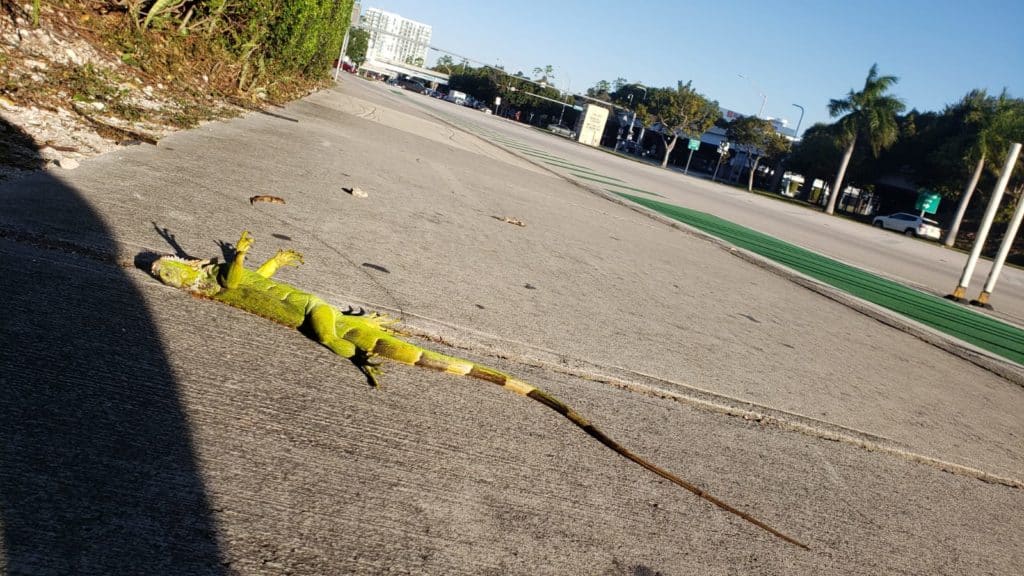
A green iguana frozen on Key Biscayne near Miami. Credit: Brett Pierce
After the January cold snap, Stroud and his co-authors wanted to see whether the lizards had adapted their tolerance. They caught about 60 more lizards — roughly 10 of each of the six species — and measured their functional low temperature immediately after the cold snap. Then, they caught another 60 or so 10 weeks later, all from the Coral Gables area south of Miami.
“Using a combination of fortuitous preliminary data and some quick work on the ground right after, we were able to show that that one severe cold snap had big effects on the cold tolerance of six different lizard species,” Donihue said.
Their findings, published recently in Biology Letters, surprised the researchers. All six species seemed to tolerate a new low temperature — just over 7 degrees Celsius.
“It was very strange. It was one of the few times in our career where we’ve got a result that I was like, ‘I genuinely don’t understand that,’” Stroud said.
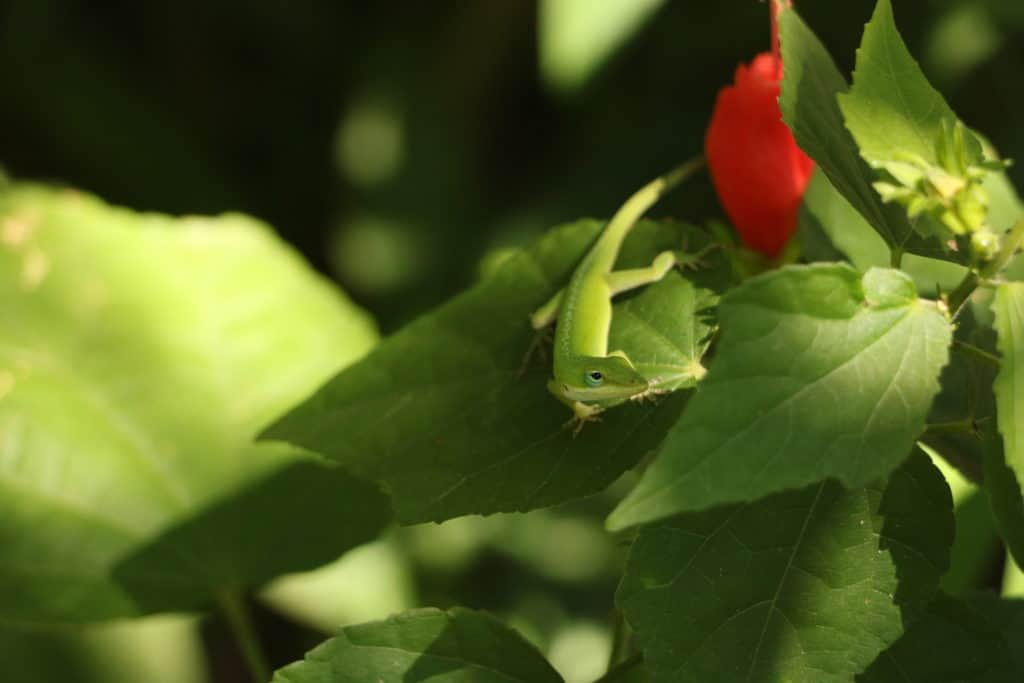
A green anole in Charleston, S.C. Credit: Joshua Learn
He speculates the result could be due to one of two things. Either it’s down to individual variation, and the cold snap just killed every lizard that might not be capable of tolerating the low temperatures of Jan. 22. Or, “the lizards could have internally, physiologically adjusted to tolerate temperatures that they couldn’t before.”
In either case, Stroud said that the surviving lizards seem to be able to deal with colder weather since January. This suggests the invasive lizards could move farther north than where they are currently found, he said.
Native green anoles, for example, are found as far north as North Carolina. But if these other five species can tolerate similar lows, they might also be able to spread that far. However, Stroud said, other factors besides temperature are at play when determining whether a species will succeed in a new ecosystem.
As climate change creates more dramatic extremes, such as cold snaps even in tropical areas, the study could offer some good news about lizard’s adaptability. Researchers previously believed that tropical species were quite sensitive to climate extremes, Stroud said, but this study seems to indicate otherwise.
Donihue, a co-author of the study, said this research adds to previous work he’s conducted on how hurricanes can affect surviving lizard toes and limbs.
“Since the hurricane research, we’ve been realizing how consequential extreme weather events are for the plants and animals that get caught in the crosshairs,” he said. “This study is setting the stage for lots more to come about how species can potentially adapt in response to the extreme effects of climate change.”
Header Image: Lizards like this brown basilisk pictured in Costa Rica don’t usually experience cold temperatures in their native regions. Credit: Joshua Learn



